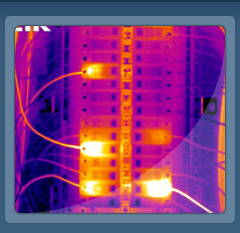



|
Mold in My Home: What do I do? This is information for people who have experienced water damage or leaks to their home. It describes medical health concerns related to mold exposure, and it also provides general guidelines on prevention, mold detection, as well as cleanup of mold-contaminated materials. Additional resources and documents are referenced.
ABOUT MOLDWhat are Molds? Molds can come in different types and are simple, organisms, present mostly everywhere, indoors and outdoors. Molds, along with mushrooms and yeasts, are fungi and are needed to break down dead material and recycle nutrients in the environment. For molds to grow and reproduce, they need only a food source – any organic material, such as leaves, wood, paper, or dirt— and moisture. Because molds grow by digesting the organic material, they gradually destroy whatever they grow on. Sometimes, new molds grow on old mold colonies. Mold growth on surfaces can often be seen in the form of discoloration, frequently green, gray, brown, or black but also white and other colors. Molds release countless tiny, lightweight spores, which travel through the air. How am I exposed to indoor molds? Everyone is exposed to some mold on a daily basis without evident harm. It is common to find mold spores in the air inside homes, and most of the airborne spores found indoors come from outdoor sources. Mold spores primarily cause health problems when they are present in large numbers and people inhale many of them. This occurs primarily when there is active mold growth within home, office or school where people live or work. People can also be exposed to mold by touching contaminated materials and by eating contaminated foods. Can mold become a problem in my home? Molds will grow and multiply whenever conditions are right—sufficient moisture is available and organic material is present. Be on the lookout in your home for common sources of indoor moisture that may lead to mold problems:
Condensation on windows or walls is also an important indication, but it can sometimes be caused by an indoor combustion problem! Have fuel-burning appliances routinely inspected by your local utility or a professional heating contractor. Should I be concerned about mold in my home? Yes, if indoor mold contamination is extensive, it can cause very high and persistent airborne spore exposures. Persons exposed to high spore levels can become sensitized and develop allergies to the mold or other health problems. Mold growth can damage your furnishings, such as carpets, sofas and cabinets. Clothes and shoes in damp closets can become soiled. In time, unchecked mold growth can cause serious damage to the structural elements in your home. HEALTH EFFECTSWhat symptoms are commonly seen with mold exposure? Molds produce health effects through inflammation, allergy, or infection. Allergic reactions (often referred to as hay fever) are most common following mold exposure. Typical symptoms that mold-exposed persons report (alone or in combination) include:
Headaches, memory problems, mood swings, nosebleeds, body aches and pains, and fevers are occasionally reported in mold cases, but their cause is not understood. How much mold can make me sick? It depends. For some people, a relatively small number of mold spores can trigger an asthma attack or lead to other health problems. For other persons, symptoms may occur only when exposure levels are much higher. Nonetheless, indoor mold growth is unsanitary and undesirable. Basically, if you can see or smell mold inside your home, take steps to identify and eliminate the excess moisture and to cleanup and remove the mold. Are some molds more hazardous than others? Allergic persons vary in their sensitivities to mold, both as to the amount and the types to which they react. In addition to their allergic properties, certain types of molds, such as Stachybotris chartarum, may produce compounds that have toxic properties, which are called mycotoxins. Mycotoxins are not always produced, and whether a mold produces mycotoxins while growing in a building depends on what the mold is growing on, conditions such as temperature, pH, humidity or other unknown factors. When mycotoxins are present, they occur in both living and dead mold spores and may be present in materials that have become contaminated with molds. While Stachybotrys is growing, a wet slime layer covers its spores, preventing them from becoming airborne. However, when the mold dies and dries up, air currents or physical handling can cause spores to become airborne. At present there is no environmental test to determine whether Stachybotrys growth found in buildings is producing toxins. There is also no blood or urine test that can establish if an individual has been exposed to Stachybotrys chartarum spores or its toxins. Who is at greater risk when exposed to mold? Exposure to mold is not healthy for anyone inside buildings. Therefore, it is always best to identify and correct high moisture conditions quickly before mold grows and health problems develop. Some people may have more severe symptoms or become ill more rapidly than others:
Anyone with health problems they believe due to molds should consult a medical professional. Additional fact sheets on Mold and Health Effects are available from CDHS:
These documents are available from the Environmental Health Investigation Branch, (510) 622-4500, or on the web at www.dhs.ca.gov/ehib/. DETECTION OF MOLD How can I tell if I have mold in my house? You may suspect that you have mold if you see discolored patches or cottony or speckled growth on walls or furniture or if you smell an earthy or musty odor. You also may suspect mold contamination if mold-allergic individuals experience some of the symptoms listed above when in the house. Evidence of past or ongoing water damage should also trigger more thorough inspection. You may find mold growth underneath water-damaged surfaces or behind walls, floors or ceilings. Should I test my home for mold? The California Department of Health Services does not recommend testing as a first step to determine if you have a mold problem. Reliable air sampling for mold can be expensive and requires expertise and equipment that is not available to the general public. Owners of individual private homes and apartment generally will need to pay a contractor to carry out such sampling, because insurance companies and public health agencies seldom provide this service. Mold inspection and cleanup is usually considered a housekeeping task that is the responsibility of homeowner or landlord, as are roof and plumbing repairs, house cleaning, and yard maintenance. Another reason the health department does not recommend testing for mold contamination is that there are few available standards for judging what is an acceptable quantity of mold. In all locations, there is some level of airborne mold outdoors. If sampling is carried out in a home, an outdoor air sample also must be collected at the same time as the indoor samples, to provide a baseline measurement. Because individual susceptibility varies so greatly, sampling is at best a general guide. The simplest way to deal with a suspicion of mold contamination is: If you can see or smell mold, you likely have a problem and should take the steps outlined below. Mold growth is likely to recur unless the source of moisture that is allowing mold to grow is removed and the contaminated area is cleaned. GENERAL CLEAN-UP PROCEDURES The following is intended as an overview for homeowners or apartment dwellers. We recommend that you consult one of several more thorough documents currently available as guidance, listed in the USEFUL PUBLICATIONS section below. Elements of the Clean-up Procedures
Assessing the Size of a Mold Contamination Problem! There will be a significant difference in the approach used for a small mold problem – total area affected is less than 10 ft2 – and a large contamination problem – more than 100 ft2. In the case of a relatively small area, the clean-up can be handled by the homeowner or maintenance staff, using personal protective equipment (see below). However, for cases of much larger areas, it is advisable that an experienced, professional contractor be used. For in-between sized cases, the type of containment and personal protection equipment to be used will be a matter of judgment. Can cleaning up mold be hazardous to my health? Yes. During the cleaning process, you may be exposed to mold, strong detergents, and disinfectants. Spore counts may be 10 to 1000 times higher than background levels when mold-contaminated materials are disturbed. Take steps to protect you and your family’s health during cleanup: Respirators can be purchased from hardware stores; select one that is effective for particle removal (sometimes referred to as an N-95 particulate respirator). However, respirators that remove particles will not protect you from fumes (such as bleach). Minimize exposure when using bleach or other disinfectants by ensuring good ventilation of the area. Never use a gasoline engine indoors (e.g., water pump, pressure washer or generator), as you could expose your family to toxic carbon monoxide. Removal of Moldy Materials Clean up should begin after the moisture source is fixed and excess water has been removed. Wear gloves when handling moldy materials. Discard porous materials (for example, ceiling tiles, sheetrock, carpeting, and wood products) Spores are more easily released when moldy materials dry out, hence it is advisable to remove moldy items as soon as possible. If there was flooding, sheetrock should be removed to a level above the high-water mark. Visually inspect the wall interior and remove any mold-contaminated materials. What can I save? What should I toss? You should discard moldy items that are porous and from which it will be difficult to remove mold completely: paper, rags, wallboard, rotten wood, carpet, drapes, and upholstered furniture. Contaminated carpet is often difficult to thoroughly clean, especially when the backing and/or padding can become moldy. Solid materials – glass, plastic, and metal – can generally be kept after they are thoroughly cleaned. |




